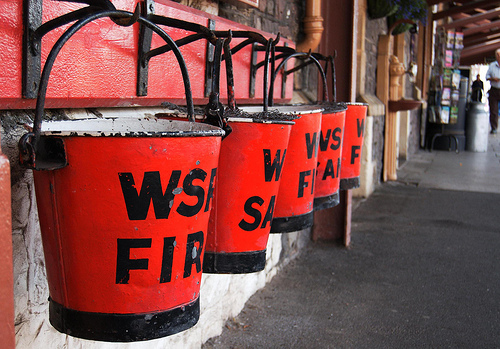
There are many different strategies when it comes to retirement income. Proponents of a “bucket approach” recommend dividing your retirement investments into two buckets-one to cover short term cash flow needs and one to be invested in a diversified portfolio for longer term growth. Bucket 1 holds low risk assets such as cash and bonds, and a periodic draft is set up to provide a consistent income stream for a predetermined amount of time. Bucket 2 is invested for longer term growth and appreciation potential. Both buckets should be analyzed periodically for re-balancing and to assess when riskier assets should be sold to refill the first bucket. The basic concept is that you should not have to worry about market volatility because your cash flow needs will consistently be met by Bucket 1 and Bucket 2 can fluctuate with the market, periodically refilling Bucket 1 when re-balancing.
It sounds simple enough, but there are some logistics to consider with this approach. One is that if you are truly going to maintain a certain number of months of cash, then you would have to refill the bucket every time you rebalance and thus sell some of your non cash portfolio without regards to market conditions. Another consideration is tax efficiency-most investors have their retirement funds spread among taxable, tax-deferred, and possibly tax free accounts. From a tax perspective, sales in Bucket 2 may not always be prudent simply for the sake of refilling Bucket 1.
The goal of this approach, and any good investment strategy, is to avoid needing to sell stocks when market conditions are bad (selling low). Instead of using a strict bucket method, our risk capacity calculation factors in your expected cash needs over the next seven years and provides a range for your stock allocation which allows us to factor in market conditions and tax consequences. So just like the bucket approach, funds needed for the short term are in safer investments such as bonds and cash while longer term funds can be allocated to stocks, which typically provide higher returns over the long term, but tend to be volatile over shorter periods. We’ll call this a “virtual bucket” approach since we still want to analyze the portfolio as a whole on a regular basis.
A consistent review (pdf) of your investment accounts ensures that your cash flow needs are covered while also evaluating whether riskier assets should be bought or sold based on current market conditions and your unique situation.
You may notice that we talked about using only two buckets. One of the reasons we avoid “bucketing” money is because there is a tendency to create buckets for too many goals. This can lead to overfunding certain goals and depriving yourself of others because it does not take into account your entire financial situation. A holistic long term plan and a coordinated investment strategy can provide peace of mind and allow for a more enjoyable retirement.
Photo Credit: ross_hawkes

